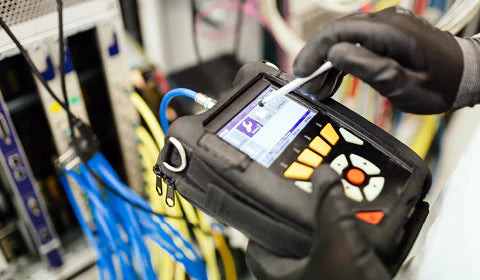Ensuring Optimal Performance and Reliability
In the ever-evolving world of technology, network equipment plays a vital role in facilitating seamless connectivity and data transmission. However, one often overlooked factor that significantly affects the performance and reliability of network equipment is temperature. The operating temperature of network devices can have a profound impact on their functionality, lifespan, and overall efficiency. In this article, we will explore the effects of temperature on network equipment and discuss strategies to mitigate potential risks.
1. Heat and Network Equipment
Network equipment, including routers, switches, servers, and modems, generate heat during operation. The heat is primarily produced by the electrical components and their interaction with data packets. Excessive heat can lead to several detrimental effects, such as:
a. Performance Degradation: High temperatures can cause network equipment to slow down, resulting in decreased data transfer speeds and increased latency. This can have a significant impact on network performance and user experience.
b. Hardware Failure: Prolonged exposure to elevated temperatures can cause internal components, such as capacitors, transistors, and integrated circuits, to deteriorate rapidly. This can lead to hardware failures, system crashes, and downtime.
c. Reduced Lifespan: Network equipment subjected to extreme temperatures is prone to premature aging. Components may degrade faster, leading to shorter lifespans and increased replacement costs.
2. Temperature Extremes and Environmental Factors
The environment in which network equipment is deployed plays a crucial role in its temperature management. Factors that contribute to temperature extremes include:
a. Ambient Temperature: The temperature of the surrounding environment can impact the operating temperature of network equipment. Extremely high or low ambient temperatures can affect the ability of devices to dissipate heat efficiently.
b. Poor Ventilation: Inadequate ventilation and airflow restrict the dissipation of heat generated by network equipment. This can cause temperatures to rise rapidly, exacerbating the detrimental effects on device performance.
c. Temperature Fluctuations: Frequent and significant temperature fluctuations can place additional stress on network equipment. Rapid heating and cooling cycles can cause expansion and contraction of components, leading to potential structural damage.
3. Mitigating the Impact of Temperature
To ensure optimal performance and longevity of network equipment, it is essential to implement strategies for temperature management:
a. Temperature Monitoring: Regularly monitoring the temperature of network devices allows for early detection of temperature-related issues. This can be achieved through temperature sensors and network management tools that provide real-time temperature data.
b. Proper Ventilation and Cooling: Adequate airflow and ventilation are crucial for maintaining optimal operating temperatures. Ensuring proper ventilation in equipment rooms, using fans or air conditioning, and considering the placement of devices to avoid heat accumulation are essential measures.
c. Environmental Control: Establishing temperature-controlled environments, such as server rooms or data centres, helps maintain stable operating temperatures for network equipment. These controlled environments should have precise cooling systems and temperature regulation mechanisms.
d. Equipment Placement: Placing network equipment away from direct sunlight, heat-generating sources, or areas prone to temperature extremes can help mitigate temperature-related risks.
e. Regular Maintenance: Implementing a proactive maintenance schedule, including cleaning dust and debris from equipment, checking cooling fans, and replacing aging components, can help prevent temperature-related issues.
In Conclusion
Temperature has a significant impact on the performance, reliability, and lifespan of network equipment. Managing operating temperatures through monitoring, proper ventilation, environmental control, equipment placement, and regular maintenance is crucial for ensuring optimal network performance and minimizing the risk of hardware failures. By prioritizing temperature management, organizations can enhance their network infrastructure's efficiency, reduce downtime, and increase the overall lifespan of their network equipment.
